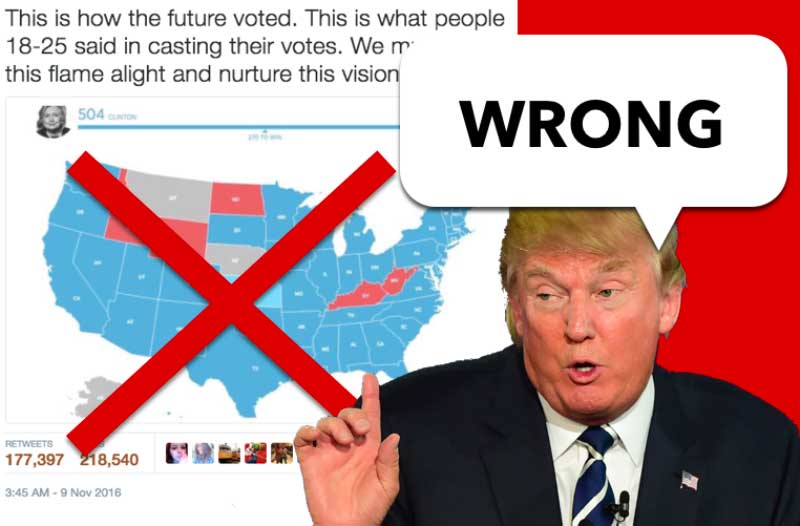After the election, this map was retweeted or shared hundreds of thousands of times. But it’s wrong. The data for this map comes from a SurveyMonkey pre-election survey showing that Clinton would sweep 88% of the electoral college if only millennials voted. Moreover, most shares were of a cut of the data dated October 25th. It doesn’t represent how millennials actually voted (the government doesn’t even release that data), and it isn’t from an exit poll asking voters to reveal their picks.
The actual results were much closer. At 55%, millennials barely came in favor of Hillary Clinton, given their typical liberal-leaning, according to the Edison Research exit polls. It’s less narrow when you remove 3rd-party voters: between Trump and Clinton, 40.2% voted for Trump, and 59.8% voted for Clinton, almost perfectly matching Whatsgoodly’s projection:

The Anti-Echo Chamber
This is a great example of the dangers of the social media echo chamber: a story that validates intense emotions will ricochet like a superball around newsfeeds that promote similar content. It’s a complex but engaging algorithm that powers most of the social media world today, including Facebook, Instagram, and Twitter.
Extreme-sounding posts are a two-sided blade: they ricochet around echo chambers, but they’re also the only thing that escapes. What people are thinking but not saying – and what the silent majority believes but hesitates to express – is the kind of content that yields debate, discussion, and votes. We would know…
Instead of feeding into echo chambers, Whatsgoodly seeks to break them. Users anonymously poll each other and engage in open, honest dialogue without fear of backlash. Whatsgoodly is about understanding how your entire community feels; it’s about empowering the moderates to be heard over the fringes who yell the loudest.
